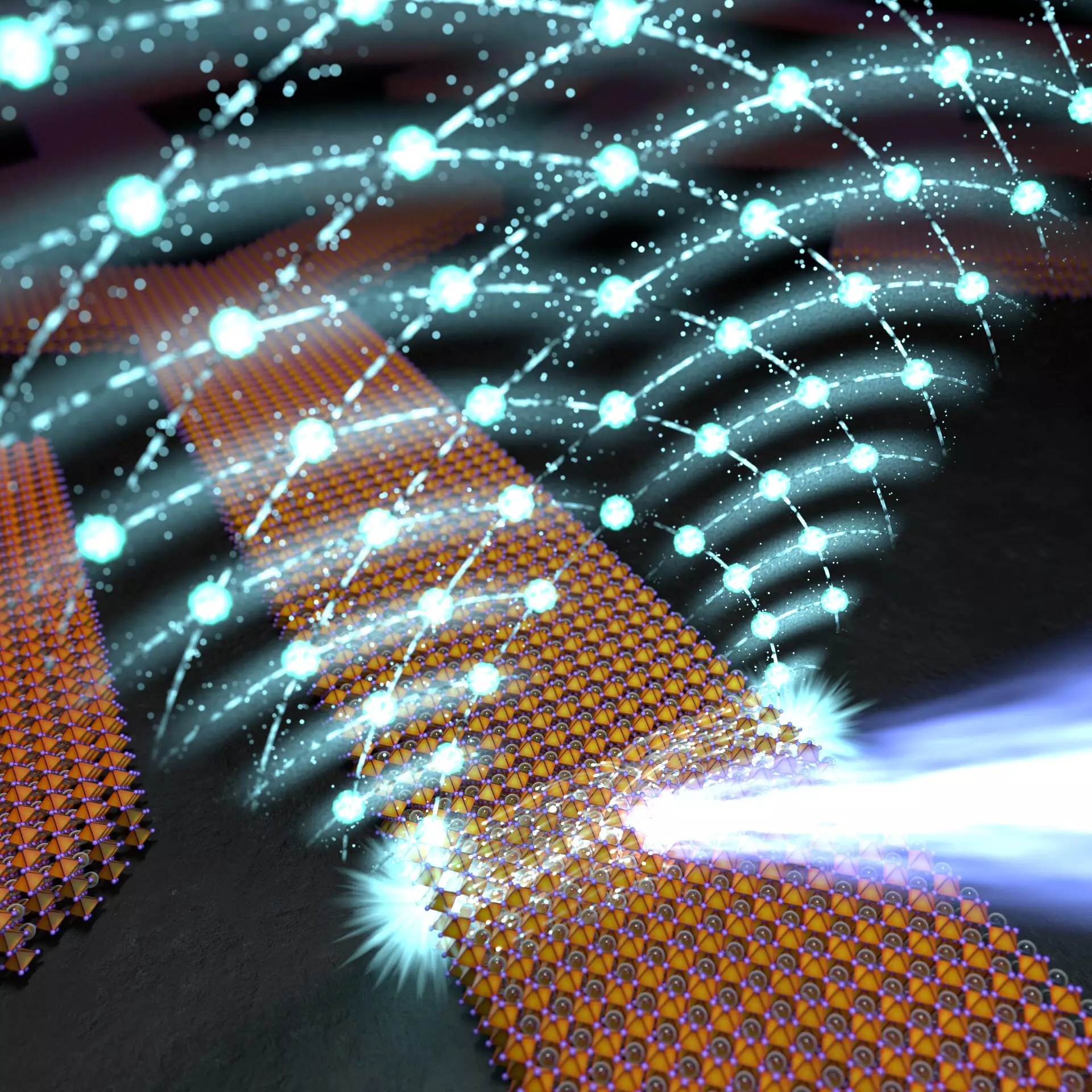The realm of integrated photonic circuits is witnessing a transformative leap, thanks to groundbreaking research emerging from the Faculty of Physics at the University of Warsaw. Collaborating with esteemed institutions across Poland, Italy, Iceland, and Australia, scientists have unveiled a novel approach to harnessing the unique properties of perovskite crystals at room temperature. This research, detailed in **Nature Materials**, underscores the crystals’ potential as multifunctional components for nonlinear optics, paving the way for advancements in both classical and quantum signal processing.
At the core of this research lies the ability to fabricate perovskite crystals with precise shapes suitable for various photonic applications. The targeted structures, including waveguides, couplers, splitters, and modulators, have significant implications for the enhancement of nonlinear optical processes. The lead researcher, Professor Barbara Piętka, emphasizes the versatility of perovskites, particularly the cesium-lead-bromide (CsPbBr3) variant, highlighting its dual role as a robust semiconductor and an ideal candidate for optical applications.
Utilizing a microfluidic synthesis technique, researchers developed scalable methods to form these crystals. This process involves growing perovskite from a solution within polymer molds, allowing for the creation of intricate shapes with notable precision. The ability to fabricate these structures on various substrates enhances compatibility with existing photonic devices, suggesting a significant leap forward in integrated photonic technology.
Understanding Nonlinear Effects and the Edge Lasing Phenomenon
One of the crucial developments in this study is the observation of an edge lasing effect facilitated by exciton-polaritons—hybrid quasiparticles that exhibit characteristics of both light and matter. The excitement around this finding is driven by the formation of a non-equilibrium Bose-Einstein condensate within the perovskite structures, which enables unique light-emitting behaviors distinct from traditional lasing methods. As highlighted by Piętka, this breakthrough does not merely arise from weak coupling regimes but indicates a powerful light-matter coupling that transforms the nature of photonic signal emission.
This instantiation of polaritonic lasing represents a significant departure from conventional light generation, dramatically enhancing coherence among emitted signals. The emitted light’s characteristics further emphasize the condensate’s coherence, as confirmed through advanced spectroscopic techniques, reinforcing its potential for applications in coherent signal processing.
The accomplishment of forming high-quality single crystals lies not only in the innovative synthesis methods but also in robust theoretical modeling. The research team undertook complex simulations based on Maxwell’s equations to visualize photonic modes and predict their behavior within these sophisticated structures. These models have revealed how various shapes contribute to effective light coupling and scattering phenomena. Such insights are invaluable for designing compact “on-chip” systems that effectively handle both classical and quantum computing tasks.
Dr. Andrzej Opala’s investigation of numerical aperture and spatial confinement in the fabricated microwires demonstrates the profound implications of geometric configurations on photonic behavior. This comprehensive modeling serves as a pillar of validation for the experimental findings.
With the advent of these advanced perovskite structures, the door now opens to a plethora of applications across numerous fields. The synthesized perovskite crystals could soon enable the development of ultra-compact devices capable of operating on the scale of single photons. By integrating nanolasers with waveguides on a single chip, scientists predict groundbreaking devices that can marry classical and quantum technologies.
Professor Michał Matuszewski highlights that these advancements could not only revolutionize data processing but also improve the efficiency of various optical technologies. Given their compatibility with silicon technology, these perovskite innovations stand on the cusp of significant commercialization potentials, enabling broader adoption in the tech industry.
The groundbreaking research on perovskite crystals crystallizes the potential of nonlinear photonics at room temperature, signifying a pivotal development in the field. As scientists from the University of Warsaw and their collaborators continue to explore this promising frontier, the future appears bright for integrated photonic systems. The streets of innovation paved by these results may soon lead to unprecedented advancements in communication, computing, and beyond, solidifying perovskites’ role as central players in the next generation of optical technologies.


Leave a Reply